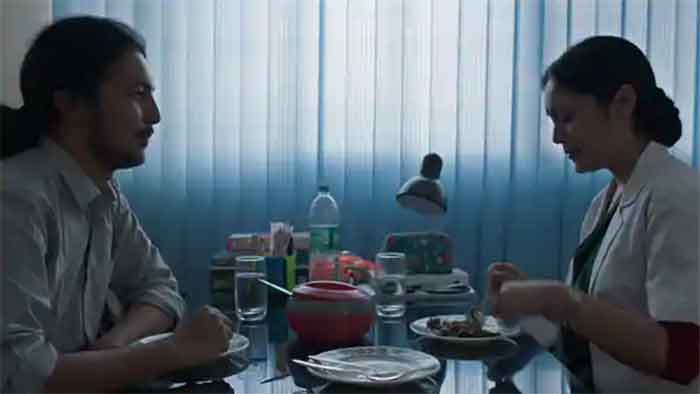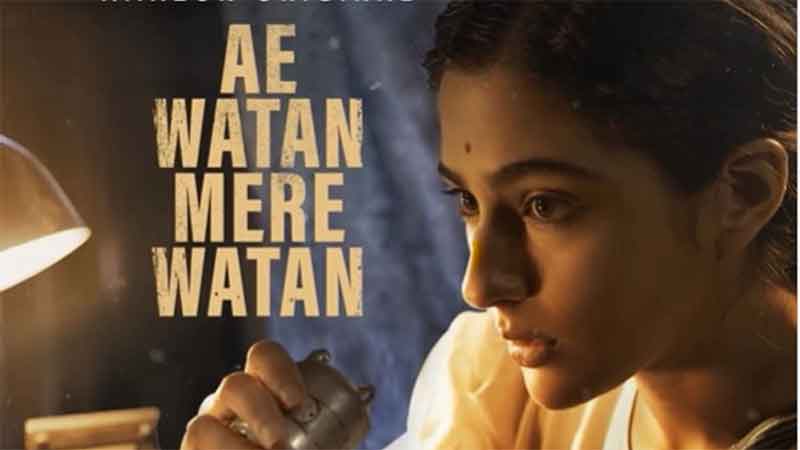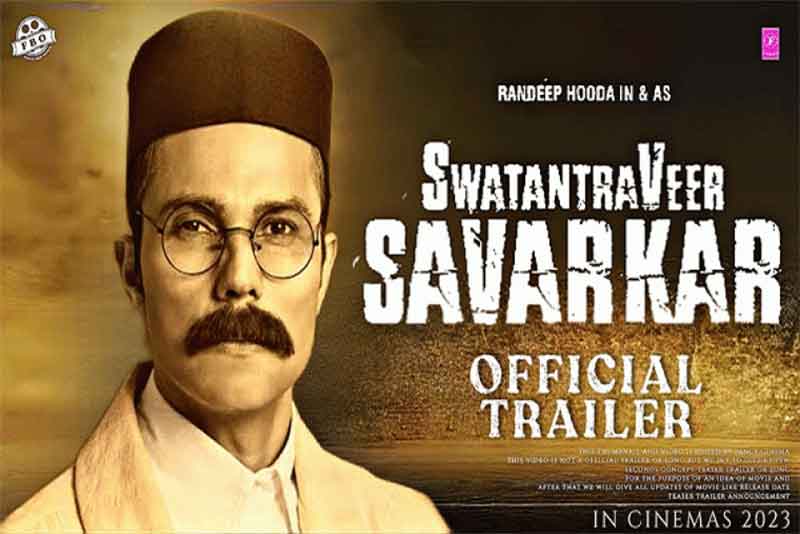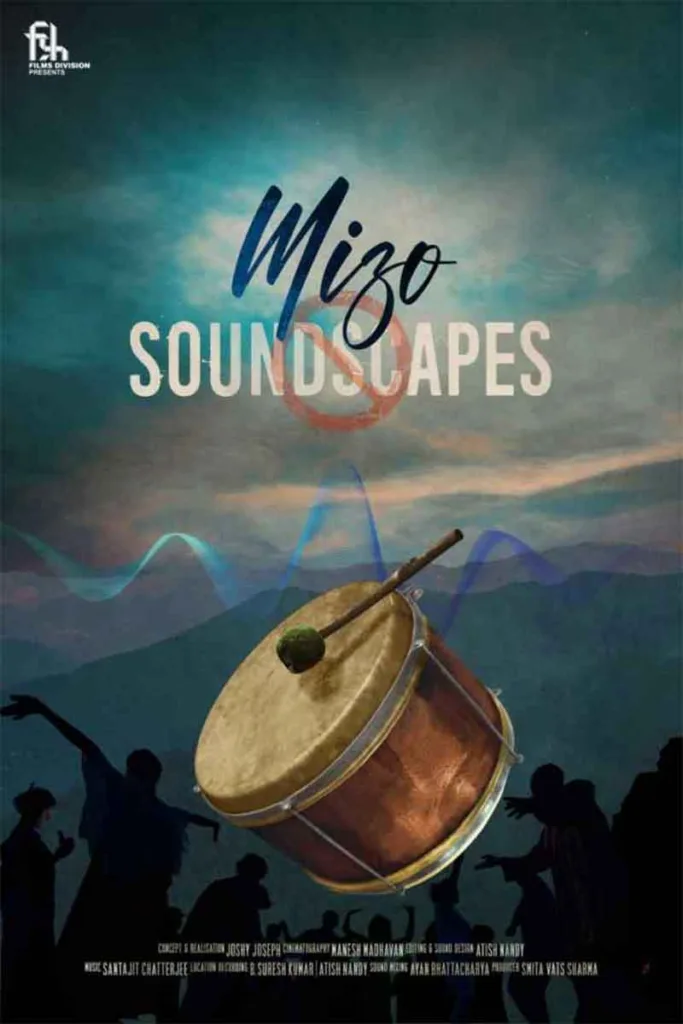
Food stories have always attracted me, be they about the everyday available homely food, meat barbeque by a group of friends en route an adventurous camping or exquisite high-class dining. I believe each of these stories has its own share of bitter-sweet plots and characters. Motivated by my love for food and themes around it, I decided to write about my personal take on Aamis(‘English: Ravening’ which I fortunately got to watch during its screening at GIFF 2019) in relation to a wider gastronomical experience.
As I let the psychic intensity and essence of Aamis sink in me, my mind suddenly wandered to a significant work in Assamese literature, i.e., Dhanada Kumari Saikia’s Axom Sahitya Sabha award-winning Randhoni Ba Rondhon Pronaali (first published in 1930 and considered the first Assamese book on cooking and cuisines).She was a revolutionary Assamese woman who became a role model for hundreds of women back in 1930s. Saikiani started writing it around 1922, exactly a year after Gandhiji visited Assam when he sincerely left praises about Assamese women’s skills in spinning and weaving. So while the dominating discourse centred around women and their emancipation through an increasing presence in the public (centred on spinning and weaving), there was Saikiani standing as a powerful example of an alternative voice—writing on food and cooking.In this book, she has kept a separate chapter entirely on different, innovative styles of preparing meat of various kinds. For instance, she presents vivid descriptions of meat cooked with variety of vegetables like bandha-kobi (cabbage),kosu (colocasia),ol-kobi(knol-khol). She also describes how to prepare suruha (soup in Assamese), a term interestingly I have come in terms with for the first time.
Desires surrounding food are always enchanting. They are about fulfilling our basic needs and choices where the element of taste is so crucial. I remember Deuta (father in Assamese) telling us food stories during our childhood through different local proverbs (fokora-jujona in Assamese). One such was,
“Maas dhuye mane meetha,
Mangkho dhuye mane teeta!”
(The more you wash fish, the sweeter it gets,
The more you wash meat, the more bitter it gets!)
While another was,
“Mangkhot mangkho barhe
Xaakot barhey mol!”
(Meat makes one fat, leafy vegetables clear the bowel!)
Northeast India is enchanting because of its dynamic food habits and the cultures they embody. And meat is the central emotion here. In short, love for meat is no new romance for us in the Northeast. However, the region is also not devoid of taboos surrounding its consumption. These originated in the rapid processes of de-tribalisation and increasing Aryanisation which started taking place centuries ago. The process of building a homogenous Assamese culture based on Brahminical establishment came at the cost of incorporating diverse ethnic/ non-Aryan groups under its umbrella, rendering different meat eating habits as normal and abnormal according to the normative framework. For example, cooking of chicken was prohibited in the central paakghor (kitchen) which continues in many households till date and it was not consumed like today. Separate arrangements are made for its preparation. For example, during my field work in Titabar(a small town in Jorhat district)) in 2018 as a Zubaan-Sasakawa Fellow, I met Pratima Saikia .She belongs to the Thengal-Kochari community who is affiliated to the Auniati Xatra of Majuli and hence is a Xaraniya-Xankariya (incorporated into the caste-fold); she narrated to me about the existing dual kitchen arrangement of the souka paakghor (central one) and the juhaal (a kitchen space attached to the former for cooking items that are forbidden to be cooked in the main kitchen. These specially include chicken. The idea of sacredness (characterised by the souka-paakghor) and profanity (characterised by the juhaal) are hence intimately attached to the ideas of taboos, stigma and borders in food practices.
Aamis strikes at the core of these taboos and expands the horizons beyond the established routines, questioning all existing structures and establishments about food, touch and desire. Its relevance can be overwhelmingly felt given that cooking and food consumption not only encompasses the visceral and corporeal but also complex social conditioning marked by codes and norms. In the backdrop of the daily rush-hush of Guwahati city, Suman, a PhD scholar researching on meat-eating traditions of Northeast India comes across Nirmali, a doctor who is married and has a child. Suman is marked by a rustic and carefree personality when it comes to food while Nirmali is a sophisticated middle-class woman surviving with her son in the flickering presence of her husband Dilip (whose professional engagements keep him away from home). Suman is as honest and naked about himself (and thus about the idea of eating meat) as Bakhtin was about his carnivalistic sense of the world! This idea of nakedness related to food discourses enhances what we know as food anthropology all the more. In fact this idea of nakedness is strongly related to the popular social media terms like ‘foodgasm’! Alexander Dumas once wrote, “Wine is the intellectual part of a meal while meat is the material.” So eating flesh is symbolic of material tactility. But Suman and Nirmali shared a bond where this idea of materiality was beyond the normative understanding of physical pleasure and their relationship depicts the coming together of physicality and metaphysicality.
I recall here a particular conversation between them which reflects the idea of how people can bond over meat talks, a very common practice significant in building discourses of friendship and cultural exchanges in this region of the country:
Nirmali: Tumaluke meat clubot ji randha, taste tu nu ki beleg ? (The meat you cook in your club, does it taste any different?)
Suman: Taste tu ‘mangkhor’ nisina! (It tastes like meat!)
This takes me back to a familiar lively conversation with Manju Baideu of Rohdhola Gaon who I visited in the summers of 2018. Chatting over a glass of rohi-mod (a variety of rice-beer common among the Bodos), she recalled her mother,“ I recall the local chicken curry seasoned with garlic and chillies made by my mother and boiled to perfection!”As she went on, I could sense the nostalgia she was creating through meaning-making.
Narratives on food and cooking are impossible without understanding the socio-cultural milieu where taste is central. The director addresses this through striking polarity between Suman and Nirmali—while Suman runs a Meat Club with his friends and arranges a meal comprising of juicy and sizzling baadulir mangkhor aanja (bat meat curry) for Nirmali, the latter’s dining table on the other hand would be a typical one comprising the usual and conventional layouts; like during get-togethers, there would be broiler chicken, canned fish, imported lamb meat etc (symbolic of a growing urban rigidity characterised by strict urban middle-class mannerism). Such polarities help us understand the cartographies of being and belonging in terms of relationship with food and its nuances. Reference to mouth watering delicacies like koldilot bonuwa murgi mangkho (chicken cooked in banana flower) or kosu xaakot maagur maas (catfish with colocasia) take us back to our roots, to our traditional flavours, ones that otherwise seemingly wither away from our normal food discourses. But at the same time, this film is located at an appropriate temporal context, given the spurt of growth of ethnic corners/restaurants/eateries in the city as well other parts of the state.
All food narratives are marked by strong visual images. No story is complete without some catchy imaginations, ones that enhance our sensory pleasures. And as food enthusiast-cum-researcher and writer, my own understanding of an appealing visual narrative would of course include my own imaginations! So why do not I imagine Suman’s entry into Nirmali’s life as a plate of sizzling smoked-pork served with apong (rice-beer)somewhere in the chilly wintry valleys of Arunachal Pradesh or maybe like a bowl of outengare maas (fish with elephant apple) on a hot sunny summer afternoon! No wonder, Nirmali feels an unfathomable intimacy for Suman and realises that she thoroughly takes pleasure of eating only ‘meat’ with him. Such bonding and memory-making as centralising on meat also lets us acknowledge how cartographic experience in food narratives is not only about building but essentially about rebuilding and re-imagining identity as well as one’s culinary philosophy.
The movie sends a strong message about existing taboos surrounding different meat consumption habits by using human flesh as the highest, inevitable form of meat available to us, humans, for consumption, something that is so sinful even to imagine! But as the protagonists take their highest sense of pleasure by consuming each other’s meat, the plot becomes transcendental from all existing human virtues. The use of eggs by Suman for serving his cooked meat to Nirmaliis symbolic of the origin of life, birth of flesh as well as femininity. The idea of guilt (common and deep-rooted in breaking our consumption norms)is also poignantly portrayed, as Nirmali goes through certain thoughtful inhibitions about crossing her gastronomical boundaries. Their coming together in the end by the ‘touch’ finally adds the icing on the cake of love, passion, hunger, desire and greed. Indeed Aamis is ‘Ravening’!
Rituparna Choudhury Faculty in the Department of Sociology, School of Social Sciences, Kaziranga University
SIGN UP FOR COUNTERCURRENTS DAILY NEWSLETTER













































